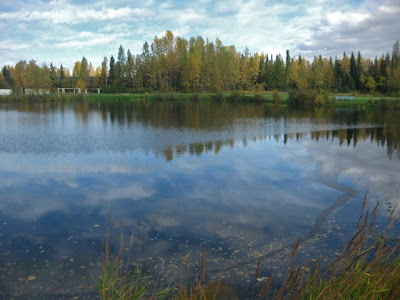I order groceries online for curbside pickup. Same with library books and at Title Wave.
My outings are reserved to our yard and my bike rides which are on a route that sees no more than 5-10 others on the trail in a 6-9 mile roundtrip ride. And we've had no visitors. We have a carpet sitting in a warehouse that was supposed to be installed in March, but we didn't want anyone in our house for two days.

So yesterday was our first trip out of town. (The last gas receipt I have is for October.) It was raining when we left - which I hoped meant we'd see fewer people.
I was taken aback by all the traffic. This is one of the most beautiful rides in the world, even on a rainy day. But all the traffic, some construction, and the low visibility dimmed my pleasure. Lots of RV's and boats.
I get that camping is healthy outdoor sport, but we have a virus and our state active case numbers are rising rapidly. We've got 1503 active cases as of today, more than double the 718 we had two weeks ago on July 10. If you try, you can minimize your contact getting outdoors, but how many are distancing and masking when they encounter others? Based on people I see on the bike trail, not many. People take risks all the time, so COVID-19 is just one more risk to many, like smoking or driving down the Seward Highway. Both of those also involve endangering others.
When we turned onto the Portage Road the traffic ended for us. We pulled in and walked the trail through a variety of landscapes just off the road.

Devils club from below (above) and from above. All shiny from the rain.

There are still some hanging glaciers up on the tops of the mountains.
At one point I was photographing these brown birds on the chance I could identify them later ( haven't had yet). I heard some sneezing. That wasn't good. We'd only seen a couple people - well away from us in the campground. We had been on the trail about 90 minutes and these were the first others we had encountered. We pulled up our masks and proceeded. There was a couple around the bend, in their 60s or 70s maybe. She pulled up a mask when she saw ours. But the sneezer didn't have one. I was pissed at him, but the serenity of the hike wasn't disturbed and I had no interest in stopping to tell him how I felt about him sneezing maskless on the trail. I assumed enough time had passed since he'd sneezed that gravity and the rain and our masks would protect us. They only other person we saw even somewhat close was the campground host who came by to tell us day hikers should not park in the campground. I was disturbed again that he was going around giving people papers to sign without a mask. Since we were leaving, he never got closer than ten feet or so.
I get it that I'm on the extreme isolation side of the COVID-19 response spectrum. I have that privilege because I'm retired, I have a house and yard. But I also monitor Alaska's COVID-19 count daily on this blog (see tab under the orange banner on top) and I'm acutely aware of how our active cases have doubled in the last two weeks to 1503. That's not a lot compared to other states, but those states had low numbers once too.
The ride back home was easier. The traffic was coming in the other direction. That's tricky on the Seward Highway where people get impatient behind bulky campers and pass where they oughtn't. But we had a car ahead of us to block any impulsive drivers. (I realize that's a pretty grim form of defensive driving, but on that mostly two lane road out of town with more than its share of head on collisions, it's a coping mechanism.)
We stopped briefly at Potter Marsh, but didn't stay long. It was windy and we were ready to get home and have dinner. But we'd had a great day and a reasonably safe outing.
















































